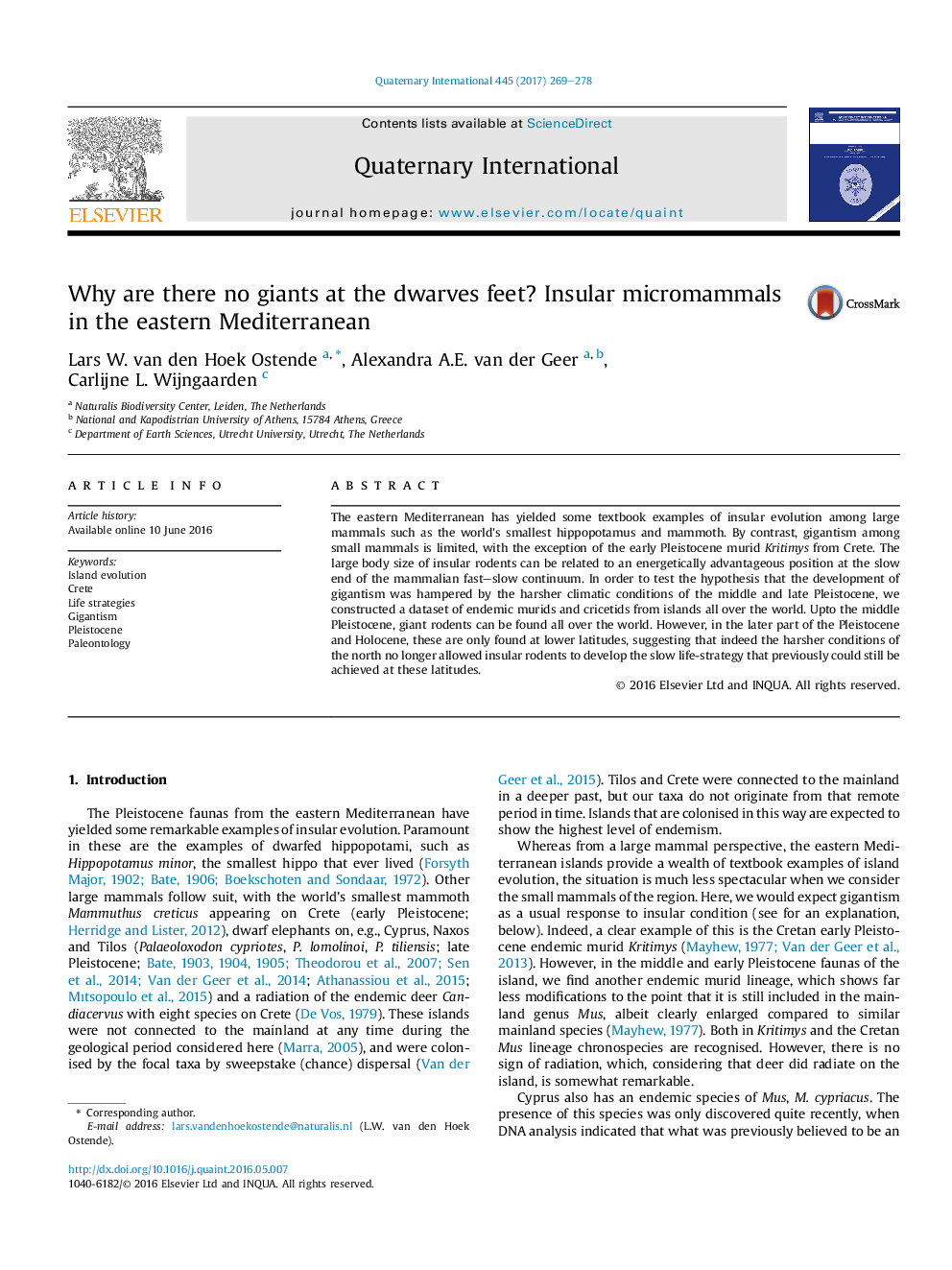| Article ID | Journal | Published Year | Pages | File Type |
|---|---|---|---|---|
| 5113235 | Quaternary International | 2017 | 10 Pages |
Abstract
The eastern Mediterranean has yielded some textbook examples of insular evolution among large mammals such as the world's smallest hippopotamus and mammoth. By contrast, gigantism among small mammals is limited, with the exception of the early Pleistocene murid Kritimys from Crete. The large body size of insular rodents can be related to an energetically advantageous position at the slow end of the mammalian fast-slow continuum. In order to test the hypothesis that the development of gigantism was hampered by the harsher climatic conditions of the middle and late Pleistocene, we constructed a dataset of endemic murids and cricetids from islands all over the world. Upto the middle Pleistocene, giant rodents can be found all over the world. However, in the later part of the Pleistocene and Holocene, these are only found at lower latitudes, suggesting that indeed the harsher conditions of the north no longer allowed insular rodents to develop the slow life-strategy that previously could still be achieved at these latitudes.
Related Topics
Physical Sciences and Engineering
Earth and Planetary Sciences
Geology
Authors
Lars W. van den Hoek Ostende, Alexandra A.E. van der Geer, Carlijne L. Wijngaarden,
